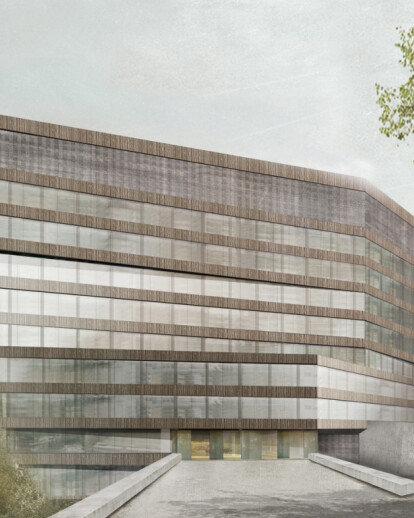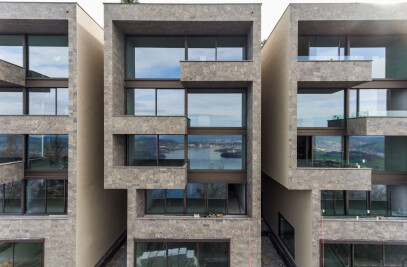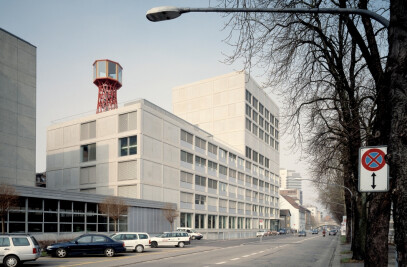The Credit Suisse building at the foot of Uetliberg came into existence between 1972 and 1979. Called Uetlihof, the structure was built in the old clay pit once used by the Zurich brickworks. Thirty years and seven additions later, Credit Suisse has again called on Stücheli Architekten to design another extension for the complex. The strategic goal of the financial giant is to concentrate more of its employees in South Zurich. The client would also like the design to reflect the greater role that the complex will be playing as its global administrative centre. The structure will have 16 storeys, six of which will be underground. Open-plan office spaces, a novelty in Switzerland in 1979, have proven themselves very effective and will continue be the norm for the 2,500 workstations in the new building.
The new structure will be Switzerland’s largest administrative building and will need to meet a wide range of requirements. Uetlihof 2 will be a step by Credit Suisse towards sustainable development as defined for a 2000-watt society. The office complex will be a Minergie-P-Eco building that carries an additional certification for good indoor air quality – enabling it to meet the most stringent environmental and user requirements. An innovative rotatable ceiling section called a “Chipsdecke” is an elegant and efficient solution to integrating utilities installations. All the indoor work spaces can be separated and combined as desired. There is no need for suspended ceilings and the building’s solid components can be made thermally active.
Given the clay pit in which the building stands, clay layers, which are covered in greenery on the socle storeys, are a recurring theme in the overall design of the structure. The layers push up against one another, creating a heterogeneous stack that exudes a sense of proportionality and expressivity. The old clay pit lives on, as does the basic shape, an irregular octagon closely associated with the visual language of the 1970s.
The face of the building also displays elements of the natural layers that appear in the clay. These layers give the structure a sculptural quality. Textured concrete alternates with smooth glass windows to produce a contrast of materials, further underscoring the central theme. The dissimilar surfaces create a direct discourse with the existing context.
The interior receives natural light from three irregular atriums. They also help with air circulation and function as social areas. The property could be described as a cell containing organelles. Beginning at the cortex – the outside wall – and moving in, the “office-scapes” extend over almost the whole space. Further inside, the access zone is linked to the large-scale inner courtyards, which in turn are enclosed by either impermeable or permeable membranes, depending on where they are situated. The inner cortex covers the nuclei, which in addition to being the structural heart also lend a sense of continuity to the space and satisfy the most important needs of the users.
The buildings, open spaces, access areas and infrastructure of Uetlihof make it a full, geometric, urban (eco-)system. Specific functions are divided non-centrally throughout the entire building. The floor plan is free from rigid spatial divisions, enabling it to change and adapt like a living cell.
With cutting-edge infrastructure, 2,500 workstations and ecologically sound and sustainable architecture, the cost of construction will total CHF 235 million. The pioneering new structure will do more than provide Credit Suisse with more space, it will also help the company gain in stature and make a lasting mark in the sustainable development landscape.

































